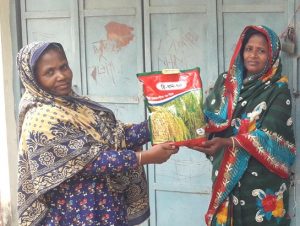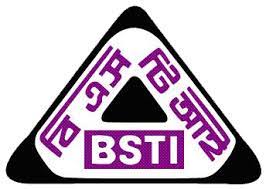Danielle Nierenberg
Greetings from Melbourne, Australia!
It’s a back-to-school season for many students across the globe. And school lunches and how they are grown, prepared, and shared is becoming a more and more important part of the curriculum. Schools, from Zambia to Canada, are creating gardens to teach students about growing their own fruits and vegetables. And often it’s not just about growing these foods, but processing, cooking, sharing, and enjoying them. Students eat three times as many fruits and vegetables at lunch when their school includes hands-on garden education.
In Kenya, students grow vegetables and keep chickens and sheep to help fertilize their garden, and in Brazil, over 700 cities and towns have school gardens to produce food for their cafeterias as part of the farmer-focused National School Meals Program. And in New York, an indoor vertical farm supplies the cafeteria in the same building, bringing a whole new meaning to “local food.”
Food Tank is highlighting 16 initiatives that are bringing school gardens and school lunches together: Garden to Café Program, Texas, U.S.; Fresh Roots’ Schoolyard Market Gardens,Canada; Purchase from Africans for Africa Program, Ethiopia, Malawi, Mozambique, Niger, and Senegal; Green School, Indonesia; Edible Schoolyard, California, U.S.; Gardeners, Illinois, U.S.; The Agricultural School of Fundación Cristo Vive Bolivia (FCVB), Bolivia; Stephanie Alexander Kitchen Garden Foundation, Australia; Green Bronx Machine, New York, U.S.; Agri Aware, Ireland; National School Meals Program, Brazil; Model Vihti, Finland; Michinda Primary School Garden, Kenya; Ministry of Education, Culture, Sports, Science, and Technology, Japan; Big Green, U.S.; and Chengelo School, Zambia
School meals can be one of the most important sources of nutrition for children around the world. The U.N. World Food Programme estimates that nearly half of all schoolchildren in low- and middle-income nations — about 310 million kids — eat a meal daily at school.
Around the globe, schools are beginning to focus on where the food in their cafeterias comes from. They are creating school gardens and boosting agriculture education to show students how to grow nutritious food crops, as well as how to cook, share, and enjoy them at mealtimes.
The impact of school gardens on children’s nutritional and academic well-being is significant: studies show that in schools that provide frequent hands-on education, students eat triple the fruits and vegetables during lunch than do students who don’t get food learning opportunities. Garden-based learning is also associated with consistently higher academic performance in not only science but also mathematics and language arts.
Food Tank is highlighting 16 initiatives that are helping students understand the food system by using school gardens to boost lunchtime meal programs.
1. Garden to Café Program, Texas, U.S.
The Austin Independent School District (AISD) Garden to Café program provides schools with support and resources to serve food grown in school gardens directly in cafeteria meals. Each participating school has a garden leader who ensures that the food moving from the garden to the lunchroom is safe to eat, and the district also issues seasonal calls to plant, which encourage schools to grow certain recommended crops that cafeterias can plan ahead to use on menus. AISD’s commitment to fresh produce also extends beyond school gardens: every day, at least three items on offer are locally sourced, the menus are designed with seasonality in mind, and certain days are designated Farm Fresh Fridays.
2. Fresh Roots’ Schoolyard Market Gardens, Canada
A partnership between the Vancouver School Board and the organization Fresh Roots led to the creation of Schoolyard Market Gardens, which are operational educational farms where students can learn and share knowledge about food, health, and even leadership and employment skills without leaving their school grounds. The food students help grow goes back into the schools via the cafeteria, and out into the broader community at local restaurants around Vancouver and in the weekly CSA-style Veggie Box program.
3. Purchase from Africans for Africa Program, Ethiopia, Malawi, Mozambique, Niger, and Senegal
The Purchase from Africans for Africa Program (PAA) links smallholder farmers with local schools in five countries—Ethiopia, Malawi, Mozambique, Niger, and Senegal. The pilot phase resulted in more than 1,000 metric tons of locally procured food serving 128,456 pupils in 420 schools. Family farmers’ productivity rates have increased by more than 100 percent, with schools feeding activities guaranteeing a market for an average of 40 percent of the food they produce. PAA is a partnership between the Government of Brazil, the Government of the United Kingdom, the U.N. Food and Agriculture Organization (FAO), and the World Food Program’s Purchase for Progress initiative.
4. Green School, Indonesia
The Green School, located in Bali, Indonesia, was founded in 2006 with just 90 students and has now grown to reach over 400 children from pre-school through high school. The school focuses on cultivating the spiritual awareness and emotional intuition of young people with the goal that they will create a more sustainable world. They use a holistic, student-led approach to learning in outdoor classrooms with three guiding principles: be local, let your environment be your guide, and envision how your grandchildren will be affected by your actions.
5. Edible Schoolyard, California, U.S.
The Edible Schoolyard (ESY), started by Chez Panisse chef Alice Waters, was a pioneer of the school garden method. Begun in Berkeley, California, in 1995, ESY is completely integrated into the curriculum at King Middle School, the hub school for the program. There, the one-acre educational garden works in tandem with a kitchen classroom and with a larger cafeteria kitchen, which uses fresh crops to prepare meals for public school students across the city. ESY also offers training

to launch similar garden-to-cafeteria programs at other schools.
6. Gardeners, Illinois, U.S.
Gardeners, which serves 1,800 students weekly across Chicago, involves students in the full growing process, from crop selection to planting to harvesting. And thanks to the Chicago Public Schools’ Eat What You Grow Garden-to-Cafeteria Manual, Gardeners is certified to serve food harvested from the garden to students — which they do with the help of top-notch chefs like Stephanie Izard, Q Ibraheem, and Paul Virant. At the schools, chefs teach students how to turn the food they worked hard to grow into fresh and seasonal dishes.
7. The Agricultural School of Fundación Cristo Vive Bolivia (FCVB), Bolivia
The Agricultural School of Fundación Cristo Vive Bolivia (FCVB) provides personal and professional development around agriculture to young people. Based in Cochabamba, Bolivia and supported by the Louis Dreyfus Foundation, the agricultural school is part of a technical college that was founded in 2006. The school provides agricultural education, practical agricultural skills, and management training.
8. Stephanie Alexander Kitchen Garden Foundation, Australia
The philosophy behind Australian celebrity chef, restaurateur, and food writer Stephanie Alexander’s Kitchen Garden Foundation is “pleasurable food education,” and the foundation’s school programs aim to promote positive eating habits through hands-on education. Elementary school children spend at least 45 minutes per week in a vegetable garden on school grounds — and double that time, another 90 minutes per week, in a kitchen classroom, where they learn how to prepare and share the foods they’ve grown in a fun environment. The program is integrated with the school’s community and curriculum, and teachers have noticed participating students bringing healthier bagged lunches from home, too.
9. Green Bronx Machine, New York, U.S.
Green Bronx Machine, founded by an educator and self-proclaimed CEO — “Chief Eternal Optimist” — of the Bronx Stephen Ritz, uses gardening and nutrition as ways to boost academic performance and create resilient and equitable communities. Green Bronx Machine’s National Health, Wellness, and Learning Center, an impressive indoor vertical farm space and sustainable training kitchen in a 100-year-old school building in the South Bronx, is the epicenter of their School Garden to School Cafeteria program: Food grown in school is served to hundreds of students in the cafeteria without ever having to leave the building.
10. Agri Aware, Ireland
Agri Aware facilitates education and public awareness initiatives for farming and non-farming communities across Ireland. The Mobile Farm is an outdoor, hands-on classroom led by trained farmers that teaches children and adults about animals and their role in food production. Agri Aware works with the Dublin Zoo to host the Family Farm, an educational and interactive acre of land representing modern Irish farm life. Every year, the Family Farm hosts nearly 1 million visitors teaching them about farm animals and Ireland’s agricultural history.
11. National School Meals Program, Brazil
Leão Machado School, a public school in São Paulo, Brazil, is one of several thousand schools in more than 700 cities and towns across Brazil that are home to urban school gardens, where students learn to grow food that goes straight to their cafeterias. This is a facet of Brazil’s robust National School Meals Program (PNAE), which has made supporting local farmers a priority in recent years. In 2009, Brazil and the U.N. Food and Agriculture Organization launched a collaborative program to strengthen school feeding programs, including school gardens, across Central and South America and the Caribbean. Today, such programs are active in 13 countries, from Honduras to Jamaica to Peru.
12. Model Vihti, Finland
Model Vihti is a development project in Vihti, Finland, seeking to create sustainable, nature-based learning environments. The model involves garden-based learning where children plan the next season, grow seedlings indoors, prepare the soil, and plant, sow, and harvest edible crops. It also includes farm visits where pupils and teachers are assigned everyday tasks of a farmer, from cleaning horse stables to stacking firewood. Children also learn in nearby forests about forestry, water systems, and climate change, as well as basic survival skills such as first aid and making a safe fire in the forest. The three aspects of the program are designed to help children understand the interconnected natural and physical processes involved in food production.
13. Michinda Primary School Garden, Kenya
At the Michinda Primary School in Elburgon, about 125 miles (200 kilometres) northwest of Nairobi, students cultivate spinach, kale, cassava, sweet potatoes, and other nutritious vegetables. They also keep animals such as chicken and sheep on school grounds, to collect manure to use as fertilizer. The primary purpose of the garden harvest is to support school feeding programs, so students can get hands-on experience growing healthy food they’ll get to eat soon after. The success of the school garden initiative at Michinda led to the establishment of partner gardens at 11 other schools in Kenya, with over 400 students participating in growing crops for their cafeterias and communities.
14. Ministry of Education, Culture, Sports, Science, and Technology, Japan
In Japan, school lunch is referred to as Shokuiku, which translates to food and nutrition education. The free school lunch program aims to promote mental and physical health and is based on government-established nutritional criteria. The program encourages sustainability by promoting environmentally friendly food production in local communities, encourages table manners, and celebrates the enjoyment of eating.
15. Big Green, U.S.
Big Green, co-founded by entrepreneur and food advocate Kimbal Musk and chef Hugo Matheson, works to improve academic engagement and bring healthier food into schools by establishing learning gardens on school grounds. Several hundred Big Green gardens in seven U.S. locales — Chicago, Detroit, Indianapolis, Los Angeles, Memphis, Pittsburgh, and across their home state of Colorado — reach over 100,000 students a day. Big Green provides detailed resources for educators and administrators to incorporate the garden into their school communities, including a step-by-step planning guide for putting learning garden produce in school cafeterias.
16. Chengelo School, Zambia
The Chengelo Farm partners with the Chengelo School to harness the creativity and passion of young people in an effort to preserve sustainable agriculture across the nation. The farm-to-school collaboration begins with students starting as early as pre-school and extends through secondary school, providing opportunities to work on the farm and learn a variety of agricultural skills. They also offer formal training for farmers, opportunities for agribusinesses to conduct research, and support to local communities through Foundations Zambia.
(Danielle Nierenberg is President of Food Tank and an expert on sustainable agriculture and food issues. She has written extensively on gender and population, the spread of factory farming in the developing world and innovations in sustainable agriculture.)




